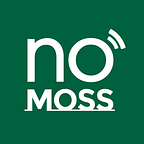What are the tools that can help your Product Managers and Product Owners manage their product?
Product Owners and Product Managers face a daunting task as they must maintain a delicate balance between future planning and present execution, while also being prepared to pivot if market responses are unsatisfactory. Furthermore, any issues that arise within the product development chain can have a significant impact on the overall strategy. For example, technical limitations, changes in the competitive landscape, or altered cost structures can all require a reevaluation of the product’s direction. In this series, I will present useful tools to help align, organise, and prioritise tasks for effective product development.
Setting Directions
There are a few tools that can help Product Owners and Managers to be nimble and adjust their overall direction:
- The Product Canvas: This is a visual framework that helps product managers and owners organise and prioritise product ideas and features. The canvas covers key elements such as customer segments, value propositions, channels, revenue streams, and key metrics. You will find many different versions of them on the internet. I would like to encourage you to add two extra dimensions and track them. The first one is Strategy; link the strategy name or id or tracking link in this field, so that you know which strategy this work supports. After all if what you are doing does not support the strategic direction, it is time to ask a few more questions. The second one is Measure or Metrics; define what success criteria need to be measured here, or link to the measure you will be using. I find sharing strategy and metrics information with my teams right from the start helps people focus on key actions and not get lost in the details. Of course, if your organisation is a bit light on the strategy and has a “just do it” attitude, it is much harder to create alignment. Even when the organisation seems to be confused about the strategic directions, you can still use your expert knowledge to analyse the market and communicate using visual tools such as the “Threats & Opportunity Solution Tree/Matrix”.
- The Threats & Opportunity Solution Tree/Matrix: This matrix helps product managers and owners evaluate and prioritise ideas and initiatives based on their potential impact and feasibility. The matrix evaluates ideas based on their potential benefit, risk, and feasibility, and helps determine which ideas are worth pursuing. The key is to use this as a communication and negotiation tool with the leaders, stakeholders and technical experts. I like to use the Threat & Opportunity in the matrix format and the Opportunity Solutions in the tree format which creates a structure to organise the relationships between each opportunity, its solutions and the experiments you can run to validate them. This is a very valuable exercise as it helps with alignment from leaders to teams, creates a priority and enables teams to conduct discovery work. Check out Teresa Torres’s work and her Opportunity Solutions Tree article.
- The Goal-Oriented Product Roadmap: This is different from the more traditional feature-based roadmap, instead, it is focused on the outcomes. The Goal-Oriented Product Roadmap shared by Roman Pichler clearly communicates the “why” and connects the strategy to tactics (features) that realise the strategy. These features will be elaborated on and managed in the Product Backlog.
You do not have to use all three of them, use what works for you. However, I would urge you to create traceability to strategies and success measures. In the next article, we will share ways to organise work and the application of a balanced scorecard in the product ownership/management context.
Originally published at https://nomoss.co by Sonya Yeh Spencer on February 28, 2023.
